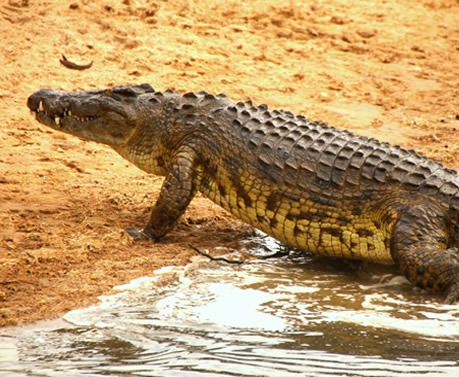
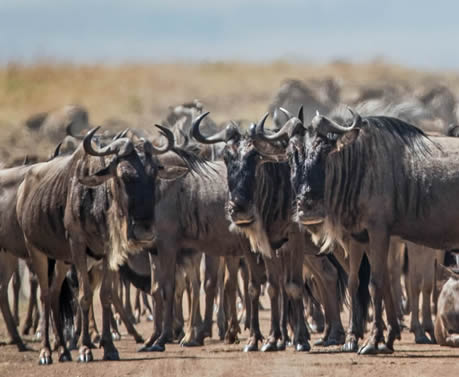

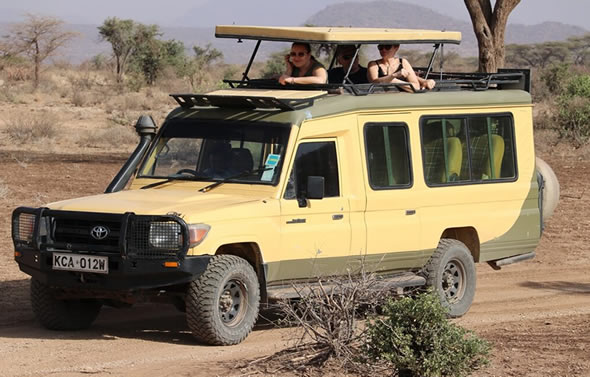
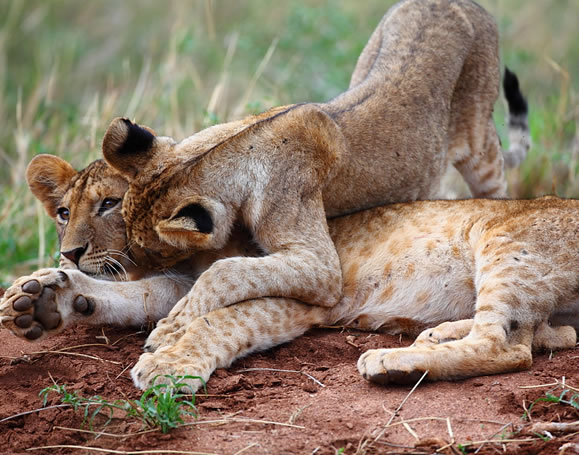
Tsavo West National Park
The park is more mountainous and wetter than its counterpart, with swamps, Lake Jipe, and the Mzima Springs. It is known for bird life and for its large mammals, e.g., black rhino, Cape buffalo, elephant, hippos, and the big cats. There are also other smaller animals that can be spotted in the park, such as the bush baby, hartebeest, lesser kudu, Masai giraffe, and diverse plants and bird species, including the threatened corncrake and near threatened Basra Reed Warbler
From the sight of fifty million gallons of crystal clear water gushing out from the underparched lava rock that is the Mzima Springs to the Shetani lava flows, Tsavo West is a beautiful, rugged wilderness. The Savannah ecosystem comprises open grasslands, scrublands, Acacia woodlands, riverine vegetation belts, and rocky ridges, including the Poacher’s Lookout, where visitors can see the teeming herds in the plains below.
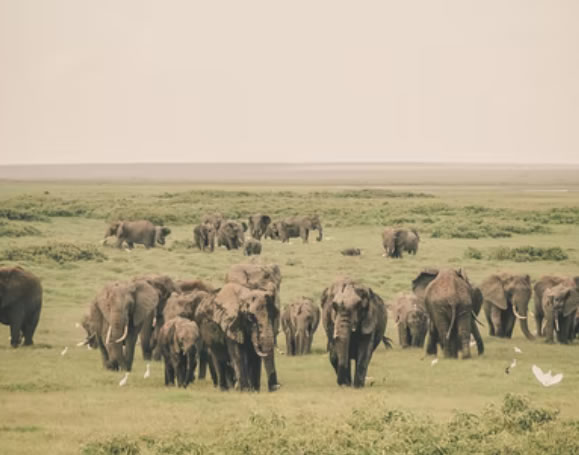
Amboseli National Park
The park lies at the foot of Mt. Kilimanjaro and covers an area of 392 km2. The park ecosystem spreads across the Kenya-Tanzania border and is famous for being the best place in Africa to get close to free-ranging elephants, among other wildlife species. Other attractions of the park include opportunities to meet the Masai people, and it also offers spectacular views of Mount Kilimanjaro, the highest free-standing mountain in the world. Amboseli combined both swampy springs and dry and dusty earth with an endless underground water supply filtered through thousands of feet of volcanic rock from the Kilimanjaro ice cap, which funnels into two clear water springs in the heart of the park.

Tsavo East National Park
Tsavo East National Park is one of the oldest parks in Kenya, located southeast of Kenya. It covers an area of 13,747 km2, which makes it one of the biggest park
The park holds the biggest concentration of elephants, not forgetting big cats and high numbers of plains game.
Tsavo East is slightly larger than Tsavo West, and it’s generally flat with dry plains compared with Tsavo West, which is mountainous and wetter.

Masai Mara National reserve
The reserve shares the same ecosystem with the large Serengeti National Park in Tanzania; thus, it’s home to various plains game, including the wildebeest, antelopes, impalas, zebras, and many others. As we are in the Mara, we have the chance to see the gnus as they cross the Mara River. Masai Mara is renowned for its higher wildlife concentration, not forgetting the famous animal migration that takes place every year. Black-manned lions, elephants, and buffaloes can be spotted, though luck is essential for spotting the black rhinos and leopards. The Mara is a home for various plains games, including the wildebeest, antelopes, impalas, zebras, and many others. As we are in the Mara, with the right season, we may see the spectacular scene as the gnus as they cross the Mara River. Masai Mara is the most visited park in Kenya, and this is accredited to the high concentration of animals, not forgetting the spectacular animals’ migration, which takes place every year! The reserve also boasts to have an enormous number of birds species.
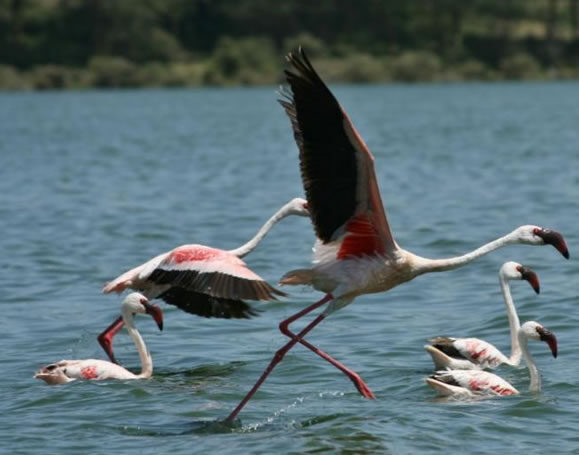
Lake Nakuru National Park
Lake Nakuru forms the heart of the 188 sq. km. national park, a popular protected area in Kenya. It was declared Africa’s first bird sanctuary national park in 1967, and this includes the lake and its surroundings. Lake Nakuru is famous for its 2 million flamingos at times. A spectacular sight that you do not want to miss! At the designated areas, visitors are allowed out of their vehicle to have a look and take photos of this unique and spectacular scenery.
There are about over 450 birds species that can be found, including about 50 species of mammals that live in the surrounding forest areas. Here are gazelle, zebra, baboon, warthog, waterbuck, Rothschild giraffe, and buffalos.
Endangered animals like the white and black rhinos can also be spotted.
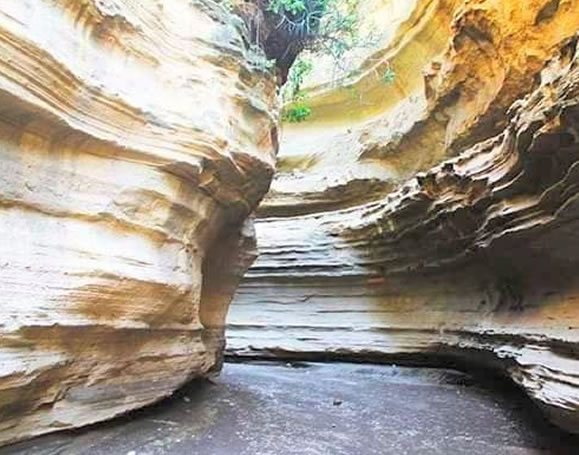
Hells Gate National Park
Visit the African park that inspired ‘The Lion King and the Tomb Raider 2 films’. The roughly 68 km2 in size park is situated in the Great Rift Valley, a jagged tectonic tear that stretches from Lebanon to Mozambique and cracks the continent in two by a few millimeters every year. This is what makes Hell’s Gate a geological marvel worth visiting: towers of rock that provide rock climbing opportunities.
This is a park where the animators of Disney’s The Lion King traveled to catch the dramatic landscapes in Kenya’s Great Rift Valley. When visitors to Hell’s Gate National Park reach the sweeping cliffs carved by a prehistoric lake that gives the park its name, they’ll discover Pride Rock’s real-life inspirations, which this park has to offer. Inside the park is the Fischer’s Tower, a 25-meter-high rock formation made from molten volcanic lava forced up through a tear in the earth—named after Gustav Fischer,s a German explorer.

Meru National Park
Meru was one of the two areas in which conservationists George Adamson and Joy Adamson raised Elsa’s lioness, made famous in the bestselling book and award-winning movie Born Free Elsa.
The Lioness is buried in this park, and part of Joy’s ashes was scattered on her gravesite. Over 300 species of birds have been recorded within the park, including the Peter’s Finfoot, the Pel’s Fishing Owl, kingfishers, rollers, bee-eaters, starlings, and weaver’s birds, the secretary bird, ostriches, and Hornbills. The 870 km2 national park is best known to host a wide range of wild animals, including Elephants, lions, leopards, cheetahs, eastern black rhinoceros, southern white rhinoceros, grevy zebras, &hippopotamus

Lake Bogoria
Lake Bogoria, formally known as Lake Hammington, is a saline, alkaline lake that lies in a volcanic region of the Kenya rift valley region, a little north of the equator. The lake boasts having one of the best magnificent landscapes, which are also home to one of the world’s largest populations of lesser flamingos. It’s a shallow lake with about 10 m depth and is about 34 km long and 3.5 km wide
Local features include the Kesubo Swamp to the north and the Siracho Escarpment to the east, both within the National Reserve. The lake is also famous for geysers and hot springs along the bank of the lake and in the lake. In four locations around the lake can be observed at least 10 geysers, which erupt up to 5 m high!
- +254 715 234 146
-
info@excellent-africa.com
excellafrica@gmail.com
